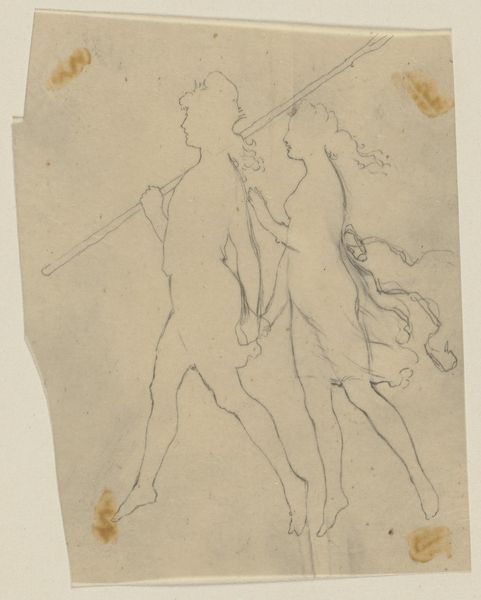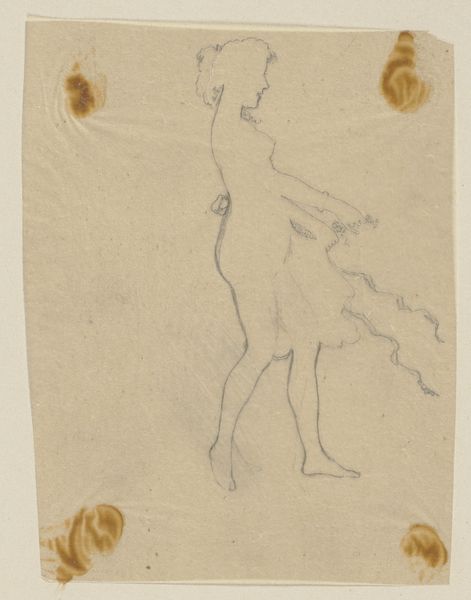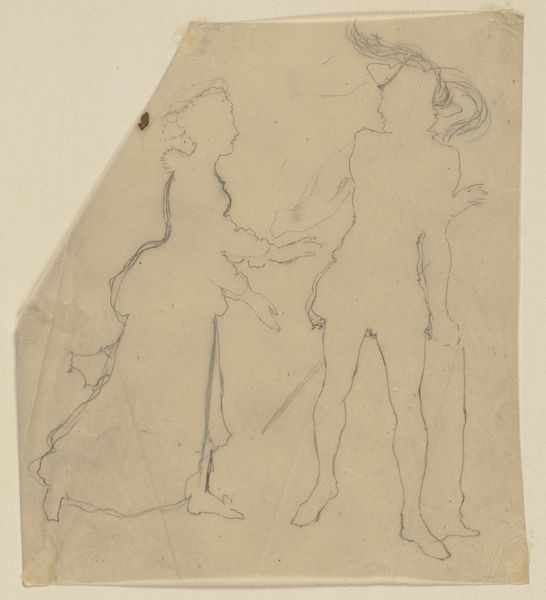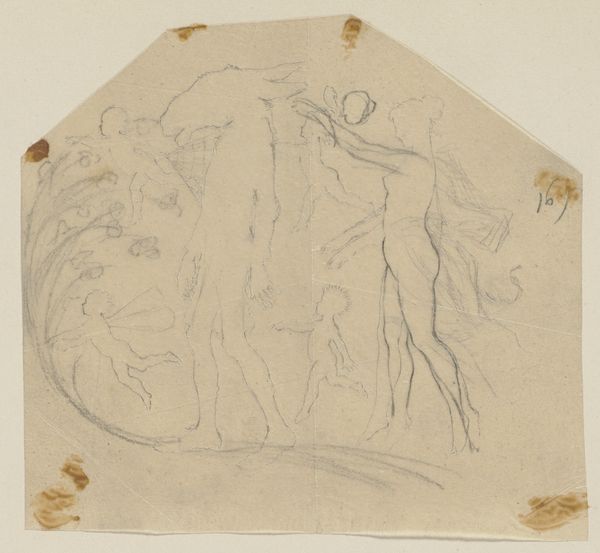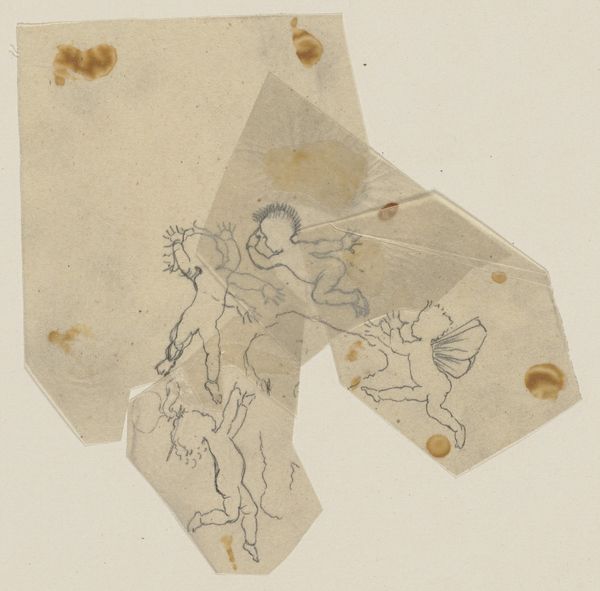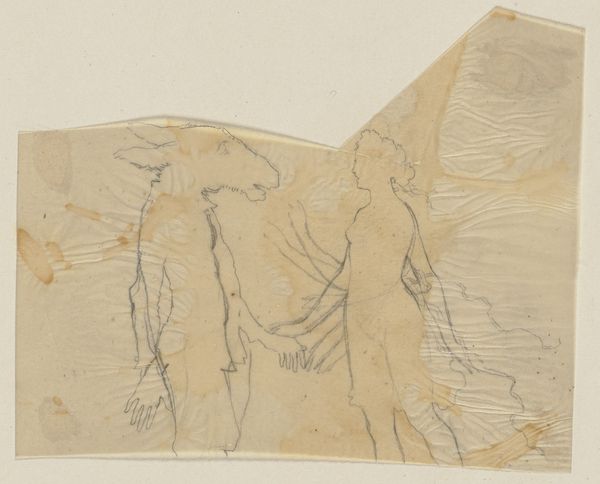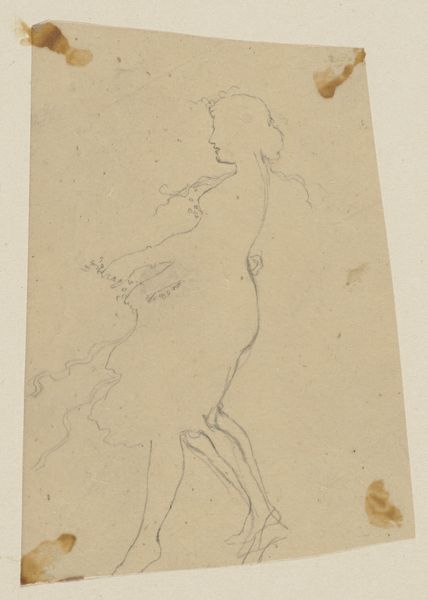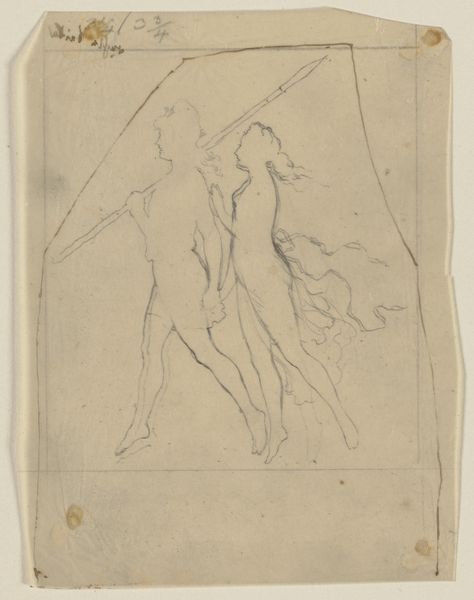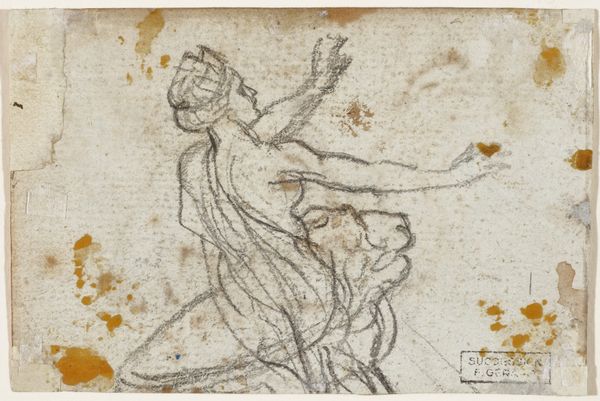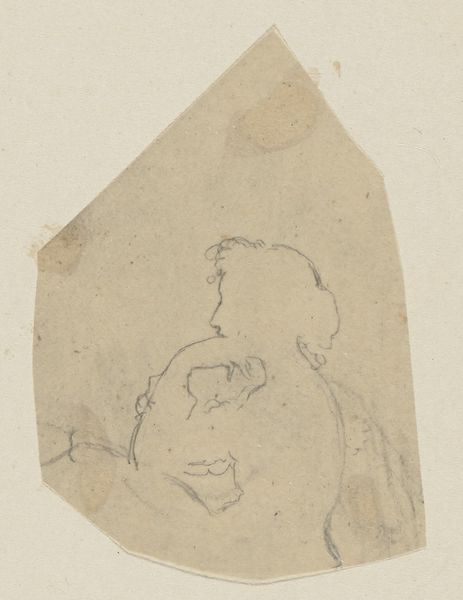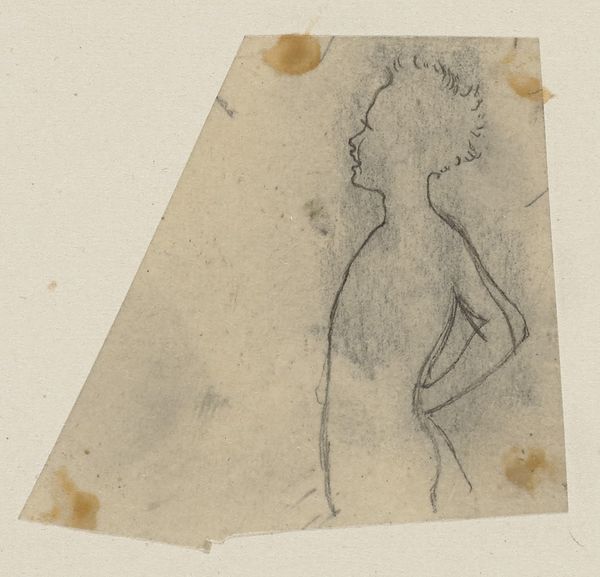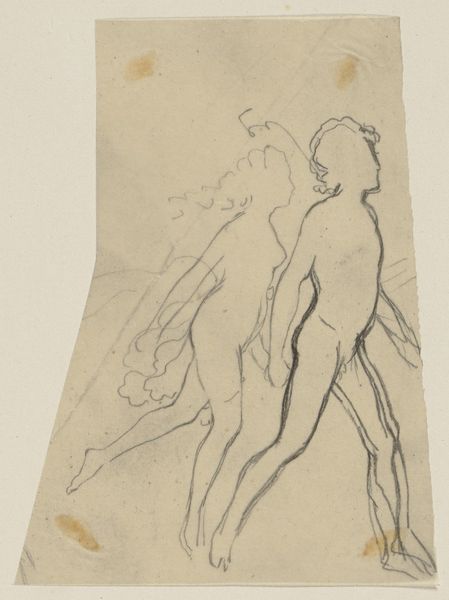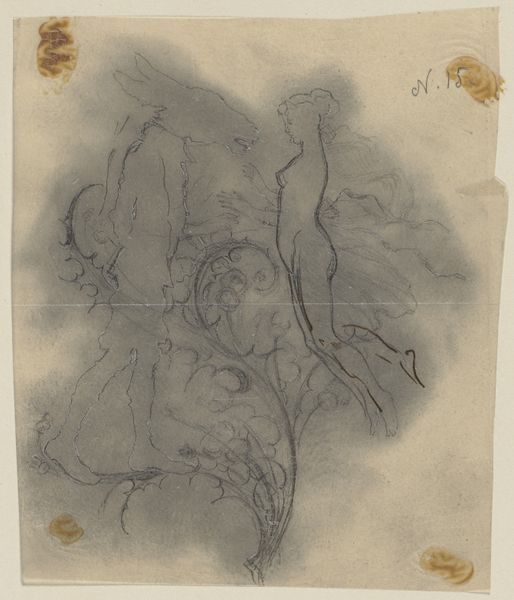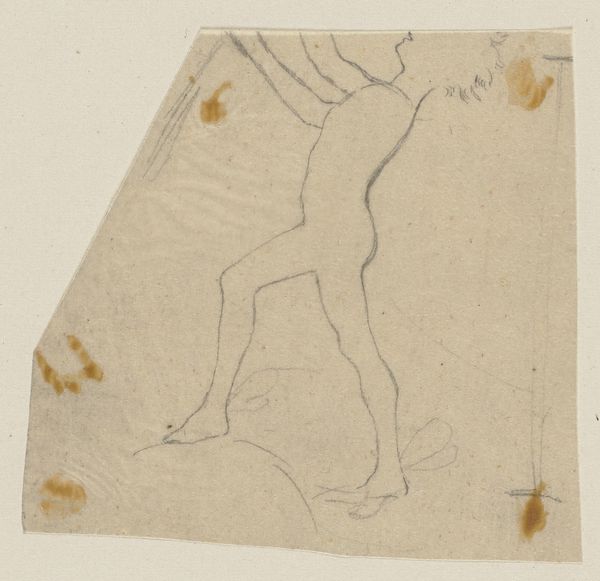
Copyright: Public Domain
Curator: Paul Konewka sketched this pencil drawing, titled "Titania and Oberon," sometime between 1867 and 1868. It currently resides in the Städel Museum. Editor: My initial impression is that this has an ethereal, fleeting quality. The figures are barely there, more like suggestions of form than fully realized beings. There's something fragile about the entire composition. Curator: Absolutely, the lightness of the pencil strokes contributes to that effect. Konewka was deeply invested in the Romanticism style. Note the dynamic contrapposto of both figures, how they relate to each other yet occupy their own space within the plane of the work, reinforcing this artistic choice. Editor: This drawing feels so caught up in a particularly patriarchal interpretation of Romanticism that it fails to reflect current sensibilities about gender relations and agency. Curator: It can be challenging to reconcile past interpretations with our contemporary worldview. Konewka seemed more preoccupied with capturing the idealized forms, referencing classical statuary. Observe how he outlines the musculature of Oberon’s leg and contrasts this with the drapery surrounding Titania's form to provide balance to their implied movement. Editor: I find that, from an activist position, even the figures are complicit. It seems they’re being swept along on the journey rather than determining their individual or shared directions. I also believe we should acknowledge the inherent bias within institutions. How many drawings of Zeus are featured? Do we examine Zeus through such stringent considerations of compliance? Curator: That's a relevant point. While interpretations change with evolving sensibilities, we can analyze what Konewka conveyed formally. Editor: Still, acknowledging these broader implications is vital. To view the work in isolation denies both its complexity and its socio-historical existence. By acknowledging these complexities we can view both how the artist rendered their interpretation while using the opportunity to educate ourselves about past/present perceptions of these types of subjects. Curator: Well, my hope is that attentive examination enhances our appreciation of the line, structure, and relationship presented in "Titania and Oberon." Editor: And I remain hopeful that an approach with activist insight sparks reflection, furthering progressive evolution both in thought and awareness.
Comments
No comments
Be the first to comment and join the conversation on the ultimate creative platform.
